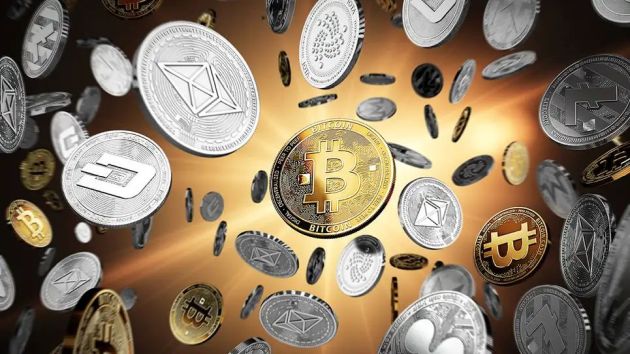 According to the old adage, “If it’s too good to be true, it’s a scam”.
According to the old adage, “If it’s too good to be true, it’s a scam”.
In times of rampant fraud, like we’re seeing in the crypto world now, many people are repeating this warning. Take the OP of this LinkedIn Post for example.
I’m sure they’re all well-meaning.
I’m also sure that their warning is valid most of the times.
But what about the rest of the times?
Glad you made the "not always" caveat – because some of the biggest fortunes were founded on "too good to be true" deals that did prove very good.
— Ketharaman Swaminathan (@s_ketharaman) January 2, 2023
Many fortunes have been made on the back of money-making schemes that seemed questionable at the time but worked out well in the end.
In this post, I’ll share seven examples of such schemes:
- Dhirubhai Ambani Nylon Arbitrage
- Sam Bankman-Fried Khimchi Premium
- Sachin Bansal and Binny Bansal Flipkart Sale
- Bernie Madoff Ponzi Scheme
- Zerodha Revenue
- Kunal Shah Startups
- eBay Bonanza
Let’s get on with it.
1. Dhirubhai Ambani Nylon Arbitrage
Nylon arbitrage is reported to be the source of the first fortune of Reliance Industries, FORTUNE GLOBAL 104 corporation and the second largest company in India, with FY2022 revenues of $94 billion.
To make manufacturers self-sufficient, the Indian government allowed them to import raw materials only in proportion to the goods they exported. Ambani persuaded the government to let him import polyester filament yarn in proportion to the nylon goods he exported. Nylon was available cheaply in India, polyester filament was 600% more expensive when locally sourced in India than its cost when imported. So Ambani set up a closed loop: make nylon clothes from locally-sourced materials; sell them abroad; use the import quota to import polyester filament; sell it at home. – The Diff by Byrne Hobart
2. Sam Bankman-Fried Khimchi Premium
Sam Bankman-Fried, the founder of FTX, raised nearly a billion dollars in seed capital for his now-bankrupt cryptoexchange by using the so-called Bitcoin Khimchi Arbitrage.
SBF noticed that Bitcoin was trading at $10,000 in USA and $15,000 in Japan / Korea. This was too good to be true – one simply buys Bitcoin at the lower price, sells it at the higher price, and pockets the 50% difference. Instead of dismissing it, SBF decided to create some accounts on different exchanges to do a proof of concept. It worked! And yielded a $20 profit. SBF immediately plonked down $50,000 of his own money to work. – Adapted from Sam Bankman-Fried Has A Savior Complex – And Maybe You Should Too by Adam Fisher*.
The rest is history.
SBF effectively exploited the “too good to be true – but true” delta between the price of Bitcoin in USA and Asia to make a billion dollars in profit in a few weeks. (If you do the math, $50,000 compounding at 50% per day will result in one billion dollars in 24 trading days.)
3. Sachin Bansal and Binny Bansal Flipkart Sale
If somone came around and told you, “Hey, take this money to start a company and become a billionaire in 10 years without making profits”, most of you will throw them out as a conman.
Sachin Bansal and Binny Bansal did not.
Instead, they founded Flipkart and rode the VC Investment Model to blockbuster success for Flipkart and themselves. More at How Do Founders Become Rich When Their Startups Don’t Make Profits?.
(For the uninitiated, India’s largest ecommerce company Flipkart was founded in 2007 and sold out to Walmart for $22 billion dollars in 2017. The two co-founders cashed out with a billion dollars apiece. The company still makes losses. At $549M, it’s the highest loss-making “startup” in India.)
4. Bernie Madoff Ponzi Scheme
The first one-third of investors in Ponzi Schemes typically receive the promised outsized returns, however “too good to be true” they are.
(According to studies, the second one-third gets its capital back, only the last third loses its shirt.).
5. Zerodha Revenue
Zerodha, the Robinhood of India, pioneered free stock trading. On the back of its disruptive brokerage model, it overtook ICICIdirect, HDFC Securities and all other incumbent full service eBrokerages to become the market leader.
When I recently read that Zerodha made revenue of INR 4,300 crores ($518 million), I almost jumped off the seat.
For a free app, this sounded too high. I was then told that, while Zerodha gives cash trades for free, it charges 0.03% for F&O trades (subject to a maximum of ₹20 per trade).
I then did the following back-of-the-envelope math.
– Revenue: ₹4300 crores
– Users: 6.2 million
– Average Revenue per User (ARPU): ₹7K/user/year
– Brokerage: 0% on Cash, 0.03% on F&O (max ₹20)
– If 100% users do F&O, F&O trading volume = ₹2.3CR/user/year.
I thought this figure was too high. Especially when I learned that many Zerodha users don’t do any F&O.
@gopibella: Why do you assume 100% users do F&O? 3 members of my family + self have Zerodha accounts. None of use F&O.
Nonetheless, the revenue figure is widely reported by the media. So, however much it sounds too good to be true, it must be true.
6. Kunal Shah Startups
Kunal Shah is the Founder of CRED, a unicorn startup that gives rewards for paying a credit card bill. Yes, that’s right, credit card bill. This is over and above the reward points given by the credit card company for making purchases on the credit card. This would sound too good to be true to anyone who even has an iota of understanding about credit cards work, as I highlighted in InCREDible Rise Of CRED but it is true.
Kunal Shah’s previous startup gave coupons worth the full amount of what was topped up by prepaid mobile phone users and was appropriately called FreeCharge. If that sounds even more incredible, it is, but not only for its users – Shah exited by selling the startup for $400 million.
7. eBay Bonanza
You place an order for coffee pods for $20 on a random seller on eBay and pay with your credit card. Two days later, you receive the coffee pods and a coffeemaker machine worth $200 along with a note that says “enjoy the free gift”. The package also contains an invoice from Nespresso for $220 with your name on it. You check your credit card online, it shows only your $20 charge to eBay seller and nothing to Nespresso.
If this happens to you, enjoy the bonanza! There’s no catch as far as you’re concerned.
According to NPR, you’re the beneficiary of the so-called triangulation fraud used by carders. As explained in its podcast titled Wake up and smell the fraud, the eBay seller pockets your $20 and uses stolen credit card details (available on the dark web for ~$5) to place an order for the coffee pods and coffeemaker machine on Nespresso website for $220 (but effectively at zero cost to him since the card is stolen) and enters your name and address for delivery. He gifts you the coffeemaker with the expectation that, like the vast majority of people who won’t look a gift horse in the mouth, you’d be delighted with the freebie and leave a good review for him on the site, thus helping him to continue to perpetuate this fraud.
I encourage you to listen to the podcast to understand who the real victim is (Spoiler alert: It’s not you).
Common man never gets tradeoffs, no wonder @patio11 's line "the optimal amount of (payment) fraud is greater than zero" was cut out from the podcast targeted at J6P. https://t.co/t5sj1OIFJx.
— Ketharaman Swaminathan (@s_ketharaman) November 26, 2023
While you didn’t seek out this money making scheme, it sought you out and enriched you.
I’m sure some of you will pushback against the above examples and say that such money making schemes are very rare.
I won’t disagree with you.
But, wealth creation is equally rare.
Known to be subject to Power Law Curve, generational wealth is restricted to only 1-2% of the world’s population. So, even a 1% success rate for “too good to be true” money-making schemes is not bad odds.
DISCLAIMER: This is a report of past events. It is not investing or legal advice.
*: This article was published on Sequoia Capital website on 22 September 2022 and subsequently deleted when FTX filed for bankruptcy.
